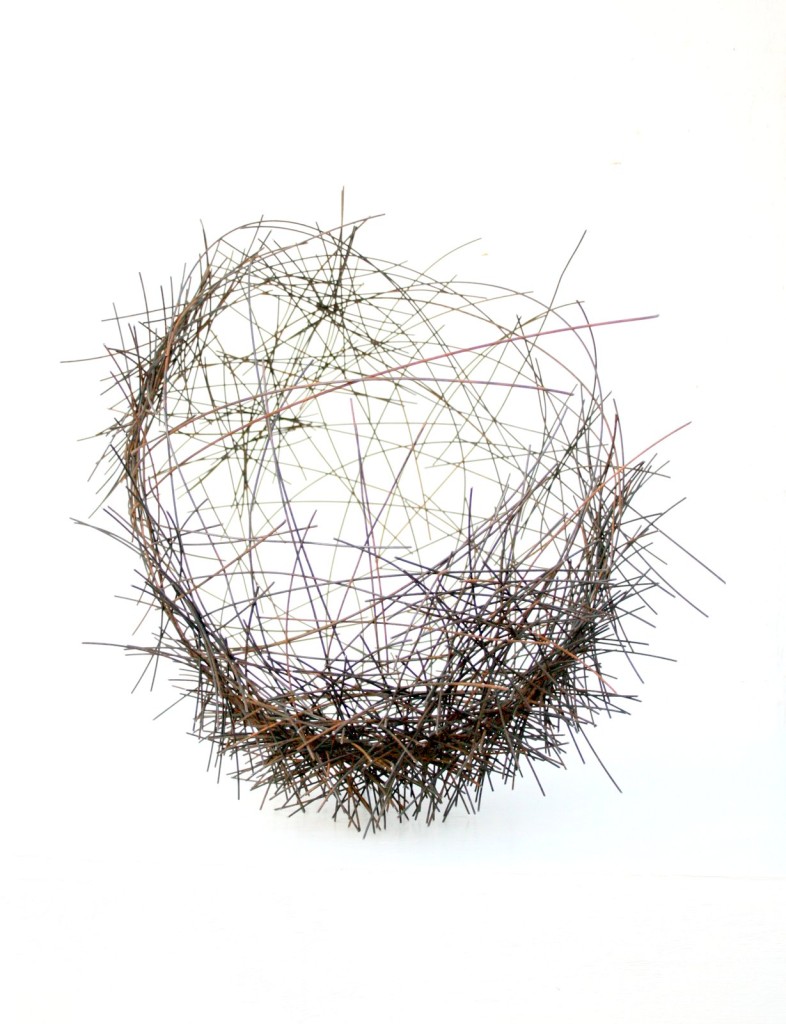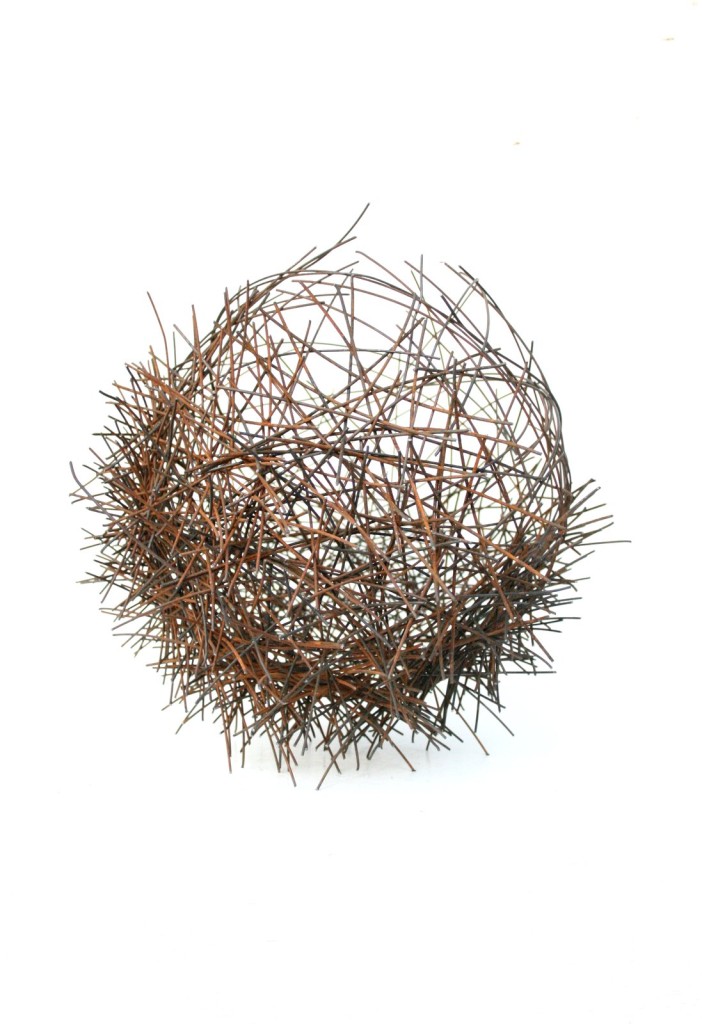
“The closer you look, the more the fragment of recognizable human form is lost in a tangle of unrelenting lines and loops.”
Untitled II, 2013.
About:
Gor Soudan (1983, Kenya) is a conceptual artist living and working in Kisumu and Nairobi. Often subtly engaged with contemporary political and social issues and embedded in urban culture, Gor’s artistic practice is an organic process through which everyday material is transformed into powerful work. He has worked with pages of the Kenyan constitution, carton, plastic, shopping bags and ‘protest wire’ – a tangled black mass of wire he salvaged from car tires burnt during civil unrests in Nairobi brought about by political tension. His practice and the works he produces provide acute, often satirical observations and comment on the rapid socio-political transformation Africa, and Kenya in particular, is undergoing. In his latest work he is using protest wire, natural materials and drawings to explore an ontological history of enclosed spaces, utopian and practical pods and domes, real and fantastical atmospheres or ecosystems observed during his travels to Japan and West Africa.
 “What struck me most when I first encountered one of Gor’s figurative sculptures was the clear formal connection to the beautiful, idealized marble bodies of Greek and Roman Classical sculpture. The Venus de Milo – forever armless to our eyes – incomplete and yet, still regarded by many as betraying the essence of grace and ancient feminine beauty. The fact that these sculptures exist today most commonly in their incomplete and decrepit forms means we, as curious admirers of art from our great Western past seem accustomed and even resigned to their fragmentary naturalistic bodies, mutilated by the earth and the passage of time. But when I look at Gor’s sculptural bodies, I see both the beauty of the female anatomy molded by someone who both admires and understands it, and also the same conveyance of that eternal state of incompleteness, which relies on our willingness to accept the fragmented human body as sufficient form for admiration. But I also see something different in the specific material that he uses: this rough, unrefined wire – smelling of linseed oil for conservation purposes – presents itself as a chaos of sharp, black lines. The closer you look, the more the fragment of recognizable human form is lost in a tangle of unrelenting lines and loops. Yet, when you step back, the shapes come to together to form something all too familiar to our cultural field of vision.” (By Ola Olczak in PEEL SLOWLY & SEE).
“What struck me most when I first encountered one of Gor’s figurative sculptures was the clear formal connection to the beautiful, idealized marble bodies of Greek and Roman Classical sculpture. The Venus de Milo – forever armless to our eyes – incomplete and yet, still regarded by many as betraying the essence of grace and ancient feminine beauty. The fact that these sculptures exist today most commonly in their incomplete and decrepit forms means we, as curious admirers of art from our great Western past seem accustomed and even resigned to their fragmentary naturalistic bodies, mutilated by the earth and the passage of time. But when I look at Gor’s sculptural bodies, I see both the beauty of the female anatomy molded by someone who both admires and understands it, and also the same conveyance of that eternal state of incompleteness, which relies on our willingness to accept the fragmented human body as sufficient form for admiration. But I also see something different in the specific material that he uses: this rough, unrefined wire – smelling of linseed oil for conservation purposes – presents itself as a chaos of sharp, black lines. The closer you look, the more the fragment of recognizable human form is lost in a tangle of unrelenting lines and loops. Yet, when you step back, the shapes come to together to form something all too familiar to our cultural field of vision.” (By Ola Olczak in PEEL SLOWLY & SEE).
 Along with the rest of them II, 2012.
Along with the rest of them II, 2012.



